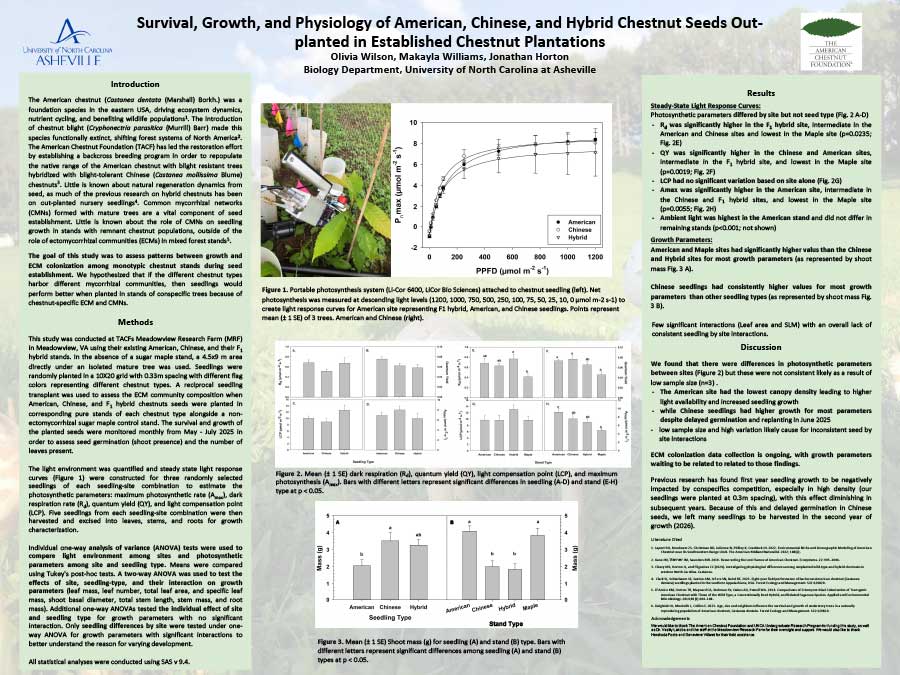2025 Poster Session
Wilson, OA, Williams, ME, Horton, JL. 2025
Click image to view PDF.
Abstract
Evaluating Survival, Growth, and Physiology of American, Chinese, and Hybrid Chestnut Seeds Out-planted in Established Chestnut Plantations
Wilson, OA, Williams, ME, Horton, JL. 2025.
University of North Carolina at Asheville, One University Heights, Asheville, NC
The American chestnut has been rendered functionally extinct in its former range due to chestnut blight introduction. In order to reintroduce this foundation species, The American Chestnut Foundation is attempting to create blight-resistant backcross hybrids of American and Chinese chestnuts. Much of the ecological research to date has been conducted on out-planted seedlings, but little is known about seedling establishment, often the most challenging stage in a tree’s life cycle. This study examined the survival, growth, and photosynthetic characteristics of American, Chinese, and F1 hybrid chestnut seeds planted in American, Chinese, F1 hybrid chestnut, and silver maple (control) stands. This study complements another that is using these seedlings to examine the ectomycorrhizal (ECM) fungal communities in these stands. If parent trees harbor distinct ECM communities, then conspecific seedlings may benefit from connecting into these networks. We measured steady-state light response curves in July, and harvested five seedlings per seed x stand combination (60 total) to measure total leaf area, stem basal diameter, total stem length, root, stem, and leaf biomass. These parameters were compared among seedlings within stands using ANOVA. Maximum photosynthesis was highest for all seedlings in the American stand, lowest in the maple stand, and intermediate in the Chinese and hybrid stands. This was likely a result of different light environments which followed a similar pattern of ranking (American highest and lower in the other three). Stand and seed type influenced growth parameters, but with very few interactions. In general, seedlings at the American stand were larger (basal diameter, stem length, and shoot biomass) while the Chinese seedlings were larger (basal diameter, stem length, shoot mass) overall, despite germinating almost a month later. Linear regression will be used to assess any relationship between ECM colonization and these parameters.

